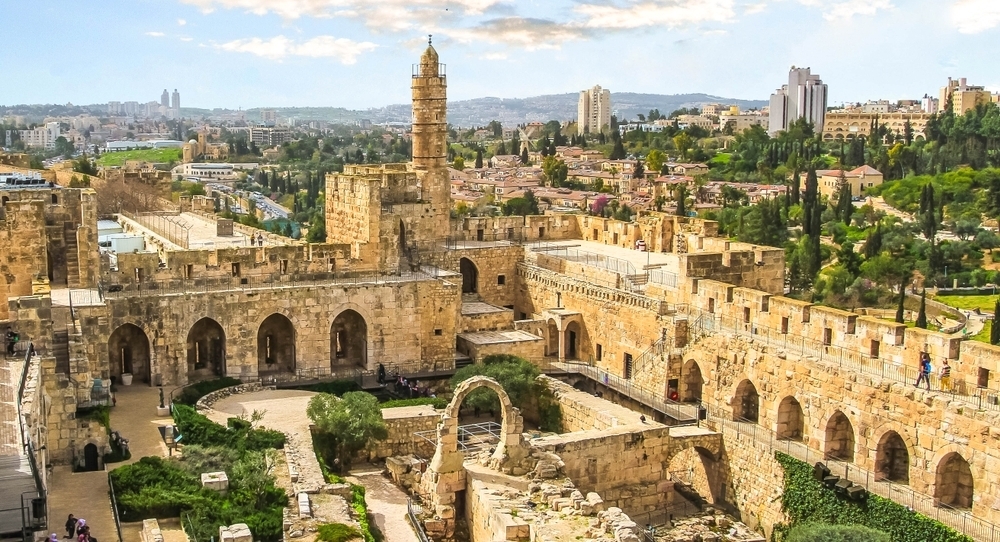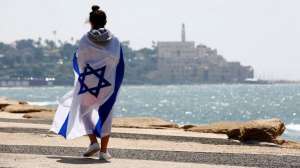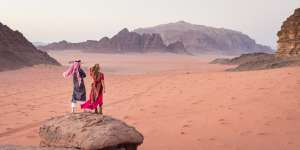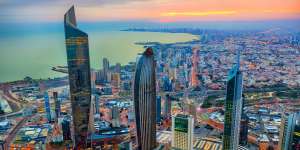Israel is one of those rare places where history feels alive in every stone, every narrow street, and every stretch of desert. For those fascinated by the ancient world, religion, or archaeology, this small country packs an incredible amount of significance into its borders. Here, stories that shaped entire civilizations unfolded—events central to Judaism, Christianity, and Islam all within a few hours’ drive of each other.
Despite its modest size, Israel’s landscape is dotted with sacred ruins, ancient fortresses, and preserved cities that whisper tales from millennia ago. From Roman amphitheaters and Byzantine mosaics to biblical landmarks and Crusader strongholds, the country is a living museum under the open sky.
We’ve compiled an in-depth guide to Israel’s most extraordinary historical sites—both the famous highlights and lesser-known treasures. Whether you’re visiting for faith, curiosity, or pure wonder, these destinations reveal why Israel remains one of the most compelling places on Earth for lovers of history and culture.
Best Historic Sites in Israel
1. Caesarea

Once an ambitious port city built by the Romans, Caesarea—locally called “Keysarya”—still impresses visitors with its monumental ruins and sea-swept beauty. Established by King Herod the Great in honor of Augustus Caesar around 22 BC, this city was his architectural love letter to Roman civilization. Herod transformed a modest fishing village into a marvel of the ancient world, complete with harbors, temples, and an intricate network of public buildings and roads.
Today, Caesarea is one of the best-preserved archaeological sites in Israel. You can wander through its sprawling ruins: the grand amphitheater that faces the Mediterranean, the remains of Roman villas, ancient streets lined with stone columns, and the Crusader fortifications that later fortified the city. The amphitheater still hosts concerts and events, echoing with life much as it did two thousand years ago.
A short drive away lies the Caesarea Aqueduct, a stunning remnant of Roman engineering that once supplied the city with fresh water from Mount Carmel. It stretches along the beach, a photogenic reminder of how advanced Roman builders truly were.
Visiting Caesarea is a journey through layers of history—from Herod’s imperial dreams to the medieval knights who later fought for control of the coastline. Set aside at least a few hours for exploration, though history enthusiasts could easily spend a full day here, absorbing every detail and watching the sunset over the same sea that once carried Roman ships.
2. Yad Vashem
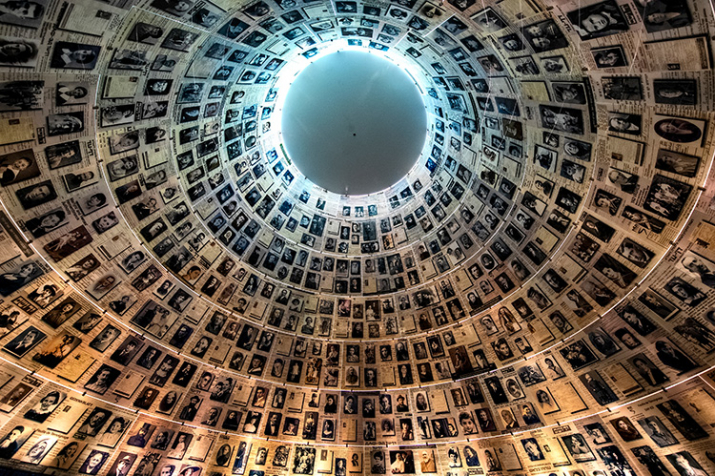
Located on the serene slopes of Jerusalem’s Mount Herzl, Yad Vashem stands as Israel’s official memorial to the six million Jews who perished during the Holocaust, along with millions of other victims of Nazi persecution. Established in 1953, it’s more than just a museum—it’s a place of remembrance, education, and reflection.
Through haunting exhibits, photographs, personal testimonies, and interactive displays, Yad Vashem reconstructs the human stories behind one of history’s darkest chapters. Visitors walk chronologically through the rise of Nazi ideology, the ghettos, the concentration camps, and the liberation, each section carefully designed to convey both the horror and the resilience of those who endured it.
One of the most emotionally powerful sections is the Children’s Memorial, carved out of a cave and illuminated by candlelight reflections that seem endless—each light representing a young life lost. Another unforgettable space is the Hall of Names, where the photographs and testimonies of victims line the walls and stretch upward into the dome above, symbolizing memory eternal.
Visiting Yad Vashem is not easy, but it’s profoundly important. It forces every traveler to confront the past and remember the cost of hatred, while also honoring those who stood against it. Plan several hours to take in the museum, outdoor monuments, and sculpture gardens that together form one of Israel’s most moving historical sites.
3. Masada
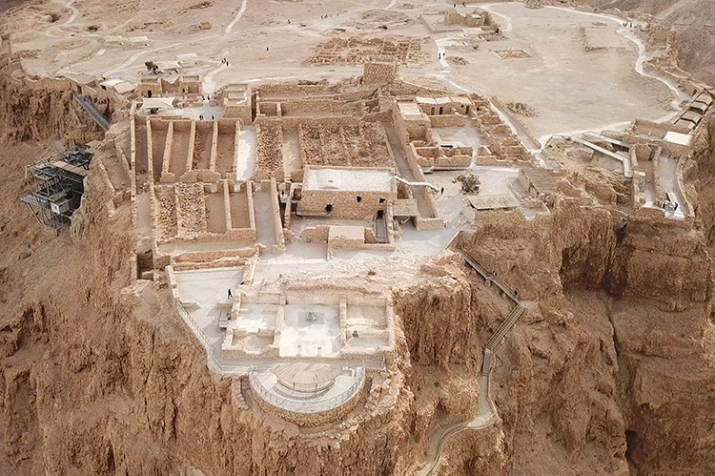
Few places embody courage and tragedy like Masada, the ancient fortress that crowns a massive plateau overlooking the Dead Sea. Originally built around 150 BC and expanded by Herod the Great as a desert palace and refuge, Masada became the stage for one of Jewish history’s most dramatic last stands.
In 66 AD, as the Roman legions crushed a Jewish rebellion, a group of Zealots fled Jerusalem and fortified themselves atop this mountain. For years, they resisted siege after siege, until in 73 AD, when defeat became inevitable, the defenders chose death over enslavement. Archaeological evidence—storerooms, fortifications, and even remnants of Roman siege camps below—still tell this haunting story.
Today, visitors can ascend Masada by cable car or follow the Snake Path, a winding trail that many choose to climb at dawn to witness the sun rising over the Judean Desert. The view from the top, with the Dead Sea glowing far below, is unforgettable. The site’s small museum and evening light show bring the story vividly to life, combining history, heroism, and heartbreak in one powerful experience.
Masada isn’t just a UNESCO World Heritage site—it’s a symbol of endurance, reminding visitors how the human spirit can hold fast even in the face of impossible odds.
4. Rabin Square

Rabin Square (known in Hebrew as Kikar Rabin) is one of Tel Aviv’s most recognizable civic spaces, not because of its architecture, but because of the memory it holds. Once called Kings’ Square, it was renamed after Israeli Prime Minister Yitzhak Rabin, who was assassinated here in 1995 during a peace rally.
That tragic event left a lasting mark on Israeli society. A memorial now stands near the exact spot where Rabin was shot, and his final speech—etched into stone in Hebrew, English, and Arabic—reminds visitors of his vision for peace. Around the square, walls still display the graffiti and messages of mourning left by citizens in the days following his death.
Today, Rabin Square remains the symbolic heart of Tel Aviv, hosting demonstrations, festivals, and national events. Surrounded by modern buildings and the city’s municipal headquarters, it’s both a public space and a silent witness to one of Israel’s defining moments.
5. Avdat

Deep in the Negev Desert lies Avdat (or Ovdat), a beautifully preserved Nabatean city that once thrived along the Incense Route—the ancient trade network connecting Arabia to the Mediterranean. Founded by the Nabateans between the 3rd and 1st centuries BC, Avdat became a crucial stop for caravans carrying spices, frankincense, and myrrh.
The city prospered under the Nabatean King Aretas IV but faced cycles of destruction and renewal. When the Romans annexed the region in 106 AD, Avdat became a garrison town, and later, under the Byzantines, it flourished again with the addition of churches, homes, and a fortress. In the 7th century, Arab conquerors took over, leaving yet another cultural layer atop its ruins.
Today, Avdat is recognized as a UNESCO World Heritage Site, part of the chain of Desert Cities of the Incense Route. Visitors can explore temples, a caravanserai, a bathhouse, and the remnants of Roman military structures—all set against the sweeping silence of the desert. The combination of Nabatean creativity and Roman engineering makes this one of the most fascinating sites in southern Israel.
6. The Western Wall
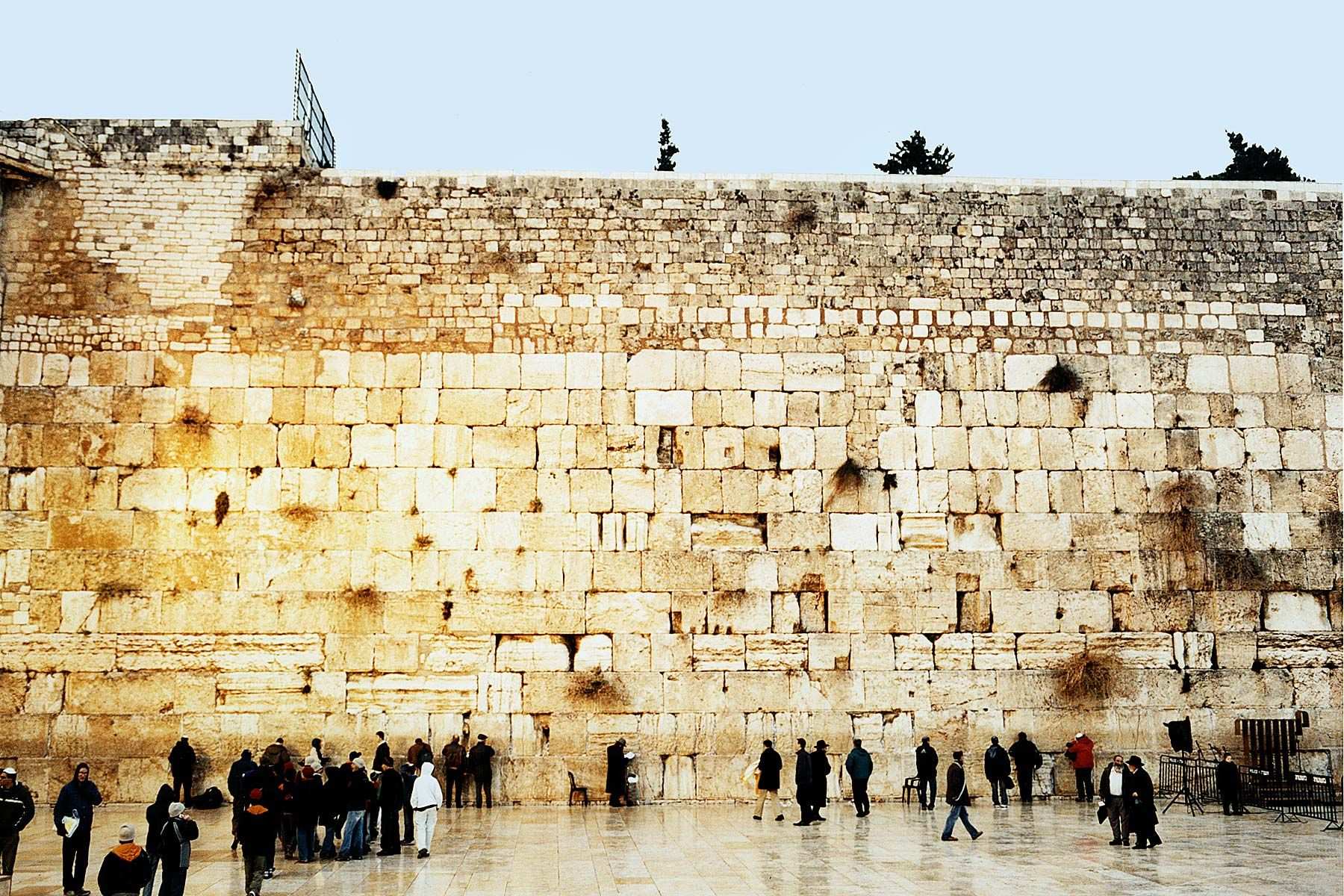
Few places in the world evoke as much emotion as The Western Wall in Jerusalem. Also known as the Kotel, this sacred structure is the last surviving remnant of the Second Temple, once the center of Jewish worship and identity. Built in 516 BC and later expanded by King Herod, the temple stood for centuries before being destroyed by the Romans in 70 AD. What remains today is a powerful symbol of faith, resilience, and continuity.
Visitors come from all over the globe to stand before the massive limestone blocks, some weighing more than 500 tons. The wall is divided into men’s and women’s prayer sections, and countless tiny notes are wedged between its stones—personal prayers and wishes left by pilgrims. The air hums with quiet devotion, and even those with no religious background often find the experience deeply moving.
Beneath the visible structure lies the Western Wall Tunnels, an underground network revealing the original street level from Herod’s time. Walking through them offers a tangible glimpse into ancient Jerusalem’s engineering brilliance. The tunnels stretch for hundreds of meters, uncovering layers of civilization built over millennia.
To visit the Western Wall is to feel time collapse—it’s one of those rare places where history, spirituality, and human emotion blend seamlessly into a single, unforgettable moment.
7. Arsuf

Perched on the cliffs of Israel’s Mediterranean coastline, Arsuf—also known as Apollonia—has witnessed over a thousand years of conquest and culture. What began as a Phoenician trading post later became a Hellenistic city, then a Roman port, and eventually a Crusader fortress. Each layer of occupation left behind fragments of its story.
The highlight of Arsuf is the Crusader castle, once the stronghold of the Knights Hospitaller. In 1265, it became the site of a fierce siege led by the Mamluk sultan Baibars, whose armies eventually breached the walls and razed the fortress. The ruins that remain—crumbling towers, stone chambers, and the wide defensive moat—still carry the drama of that final battle.
Today, the site is part of Apollonia National Park, an open-air museum of history overlooking turquoise waters. Visitors can walk along the clifftop paths, explore remnants of Roman villas, and stand where medieval knights once defended their walls. During holidays, cultural and family events bring this ancient place back to life, merging Israel’s past and present in one breathtaking view.
8. Dome of the Rock

Rising above the skyline of Jerusalem with its radiant golden dome, the Dome of the Rock is one of the most iconic and spiritually significant landmarks in the world. Completed in 691 AD under the Umayyad Caliph Abd al-Malik, it is the oldest existing Islamic monument and a masterpiece of early Islamic art and architecture.
This shrine, not a mosque, stands atop the Temple Mount—a site sacred to Muslims, Jews, and Christians alike. For Muslims, it marks the spot where the Prophet Muhammad is believed to have ascended to heaven during the Isra and Mi’raj. For Jews, it houses the Foundation Stone, the holiest point on Earth, believed to be where Abraham prepared to sacrifice his son Isaac.
The Dome’s interior is as magnificent as its exterior. Intricate mosaics, marble panels, and Arabic calligraphy adorn the walls, reflecting verses from the Qur’an and celebrating the unity of creation. In the 16th century, Suleiman the Magnificent commissioned the restoration of its vibrant blue and green tilework—patterns that still shimmer in the sunlight today.
Access to the Dome’s interior is restricted to Muslims, but visitors of all faiths can walk the surrounding courtyard to appreciate its beauty and serenity. Whether admired from afar or viewed up close, the Dome of the Rock remains one of humanity’s most extraordinary testaments to devotion and artistry.
9. Church of the Holy Sepulchre

Tucked within the labyrinthine alleys of Jerusalem’s Old City, the Church of the Holy Sepulchre stands as the heart of Christian pilgrimage. For nearly two millennia, this has been revered as the site of Jesus Christ’s crucifixion, burial, and resurrection—events that lie at the very core of Christian faith.
Originally built in 325 AD by Emperor Constantine the Great, the church was erected over what was believed to be Golgotha, or Calvary, the hill of crucifixion. Over centuries, it has been destroyed, rebuilt, and expanded by various empires and denominations, creating a patchwork of architectural styles that somehow coexist within its sacred walls.
Inside, pilgrims can visit the Stone of Anointing, where Christ’s body is said to have been prepared for burial, and the Aedicule, the small chapel enclosing the tomb itself. The dim candlelight, scent of incense, and murmured prayers create an atmosphere of profound reverence.
Today, the church is jointly administered by six Christian denominations—a delicate balance of faiths that has endured since Ottoman times. Despite the occasional disagreements over maintenance or rituals, the Church of the Holy Sepulchre remains one of the most powerful symbols of faith and forgiveness in the world.
10. Beit She’an

In the fertile northern Jordan Valley lies Beit She’an, one of Israel’s most impressive archaeological treasures. Known since ancient times, it was a major Canaanite and later Egyptian administrative center as early as the fifth millennium BC. Over the centuries, it witnessed the rise and fall of civilizations—from Israelites and Philistines to Greeks, Romans, and Byzantines.
According to the Bible, after King Saul’s defeat at the Battle of Mount Gilboa, his body and those of his sons were hung on the city’s walls. Later, under King David, Beit She’an became part of the Israelite kingdom before being destroyed by the Assyrians in 731 BC. Yet the city’s story didn’t end there.
Rebuilt as Scythopolis during the Hellenistic and Roman periods, it flourished as a member of the Decapolis—a league of ten prosperous cities. The ruins that remain today, including an elegant colonnaded street, a vast Roman theater, Byzantine baths, and mosaic-covered villas, reveal the sophistication of its golden age.
In 749 AD, a massive earthquake devastated Beit She’an, leaving behind the sprawling ruins we see today. Visitors can walk the ancient streets, climb the acropolis for sweeping views of the valley, and even enjoy a mesmerizing sound-and-light show that brings the city’s history to life after sunset.
Modern Beit She’an, with Mount Gilboa rising nearby, offers a perfect blend of archaeological depth and natural beauty—an essential stop for anyone exploring the ancient soul of Israel.
Final Thoughts
From sacred shrines to crumbling Roman cities, Israel’s historical landscape tells a story that stretches across empires, faiths, and centuries. Each site—whether it’s the solemn quiet of Yad Vashem, the rugged cliffs of Masada, or the radiant dome that crowns Jerusalem—offers a window into humanity’s shared past.
Exploring these landmarks isn’t just about seeing ruins or monuments; it’s about connecting with the people, the struggles, and the dreams that once filled these same spaces. In Israel, history isn’t something preserved behind glass—it’s alive, layered beneath your feet and written into the very air you breathe.


